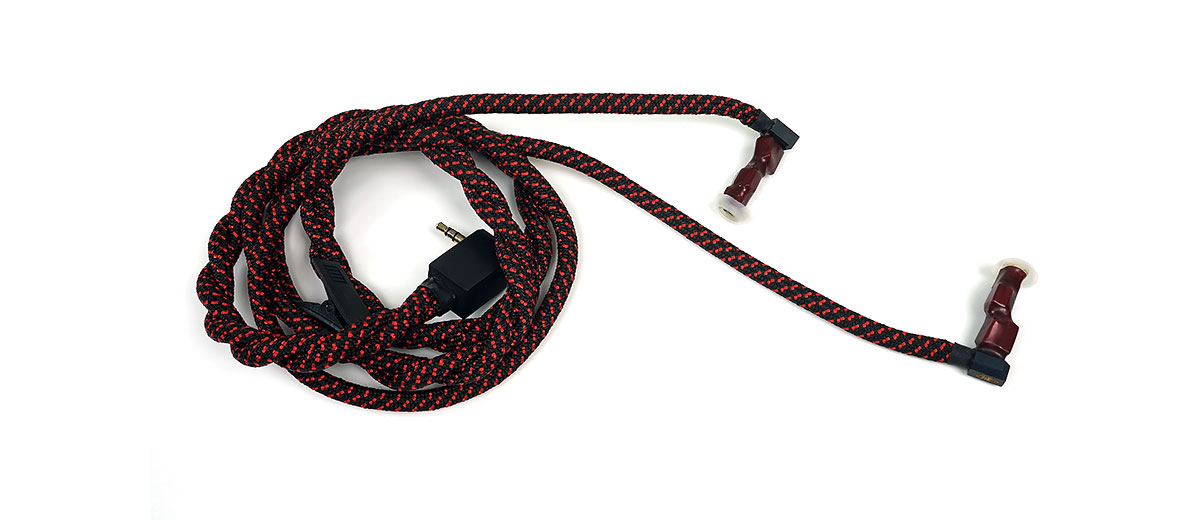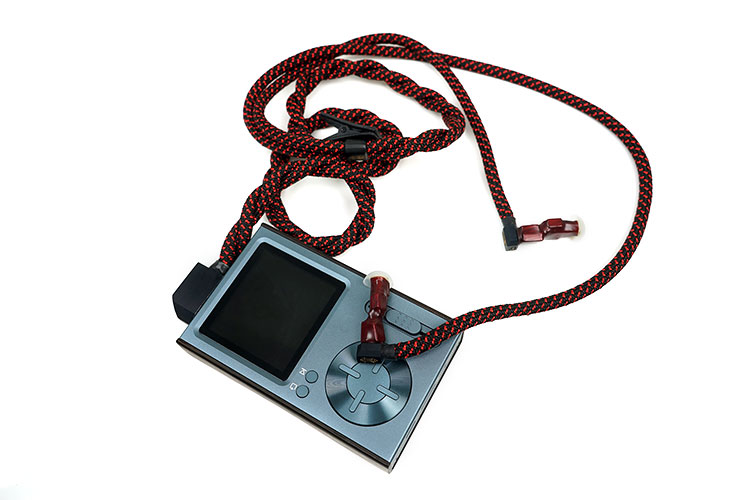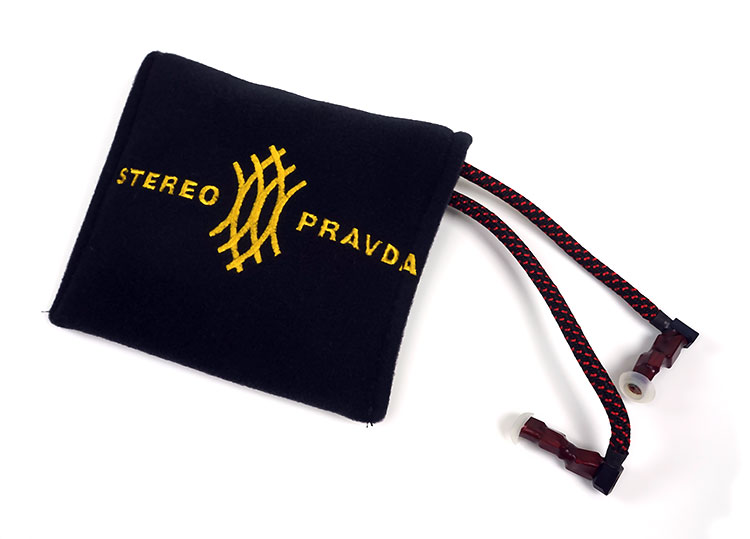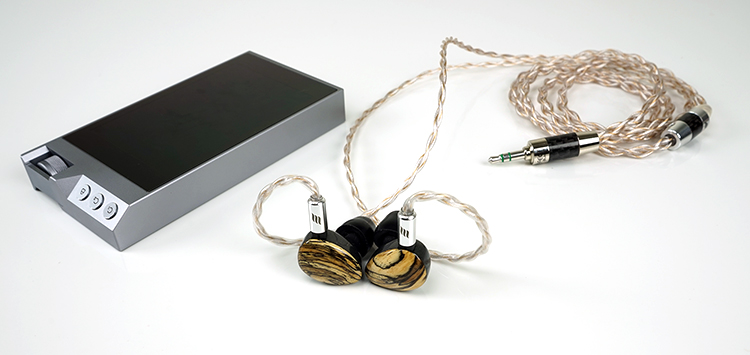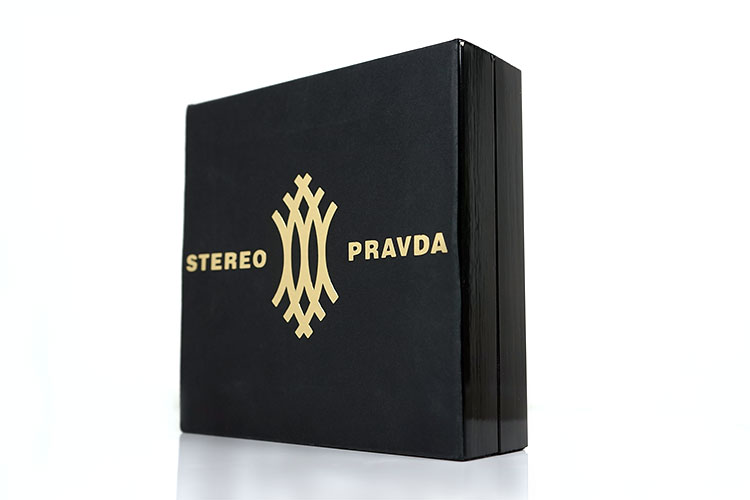Sound Impressions
Tonality & Presentation
The SB-7 is decidedly neutral in its tonality. It has a very high level of transparency and a slight upper mids focus though overall I found it a very uncolored sound. Its razor flat and very linear sounding from around 80-100Hz right up to 1K. Beyond 1k you start to get a little injection of energy around 2-4k and then again another milder elevation around 6-8k.
As such this is an IEM that has a bit more of a mids and treble focus with just enough bass to keep everything sounding fairly accurate. Note quality is clean, articulate and fast rather than overtly rich and euphoric. Having said that I do find the delivery to have a nice balance of clarity and smoothness.
Staging
Staging wise the SB-7 also surprisingly spacious sounding with fantastic imaging. You won’t get huge depth and power with that linear low-end but the instrumental separation is so well done you never feel any lack of immersion.
The dynamics on the SB-7 are just perfect for me and a big factor in how capable the SB-7 is in terms of delivering precise nuanced detail. It simply does not miss a thing. The more complex the music gets the more impressive the SB-7 sounds.
Bass
The SB-7 is not well endowed with sub-bass power. In fact, it rolls off a little, maybe by 1-2dB at most though from around 80Hz. The tiny but noticeable roll-off is in contrast to the absolute linear delivery of the mid-bass to lower mid-range performance of the SB-7.
The low-end extension is spot on though, it is not attenuated in that respect and it does have a spacious sound, it just lacks a little rumble. Instead, the SB-7 low-end focus is more on absolute accuracy and transparency. As such it is incredibly tight, well defined and pacy.
Note body is neutral and not full of rich sustain as you would expect from such a linear response. However, I have to pay special mention to the attack and decay on the low-end. As with the rest of the signature, it is wonderfully balanced. There is zero flabbiness, smooth attack and decay that is slightly short but never dry sounding. In summary, a very coherent signature.
Mids
This is where the magic of the SB-7 happens for me. Lower mids remain neutral and linear and pretty much in line with the mid to upper bass so you get a very smooth transition with no tuned dips or peaks to speak off.
Timbre
Instrumental timbre is accurate, neutral and light in body though smooth and clean at the same time. You won’t get low-end warmth and overpowering fundamentals but the articulation and instrumental separation are just excellent.
Imaging
The open sound of the SB-7 mids is astonishing, to be honest, and yet so controlled and detailed at the same time. It is not a recessed or a remote-sounding and there is nothing vague about the imaging on the SB-7.
I used the word immersive before and I will repeat it here again because the level of resolution and precise placement is superb. Spatial cues on the SB-7 are so easy to pick up on. Timpani interplay from right to left and back again is as about as clean as you can get.
Vocals
From 2-4k you do get an elevated level of energy that brings higher pitched vocals to the fore a bit more as well as some wonderfully energetic and engaging percussion interplay. I had originally thought such a curve would bring a predominance of odd harmonics and possibly some sharp partial overtones but it doesn’t seem to be the case.
Yes, the source will play a role because the SB-7 is so transparent in that regard and you can EQ the heck out of its mids with minimal ease. That being said the SB-7 with something like the ALO Audio V5 has the sweetest and most engaging female vocal delivery I heard in a while.
Treble
Oh the tuning of the treble on the SB-7 is so pleasing. It could so easily have been too forward, too aggressive and top heavy, especially with that linear low-end unable to provide a contrasting response.
Thankfully Misha has eased off the top end just enough to sound beautifully smooth yet wonderfully clear and very well extended. There is plenty of sparkle and more than acceptable levels of headroom.
Lower treble on the SB-7 is slightly elevated, though not as high as the upper mids response so it provides just enough snap and clarity without pushing down onto the vocal response and leaving everything overly sharp and aggressive sounding. Just bear in mind a bad seal will rob the top end of some body and leaving it sounding shrill and lean so make sure you have the fit just right.
Matchability
Efficiency
The SB-7 is rated at 15 ohms though Misha has left out the sensitivity rating from the spec sheet. Having tested it out of about 4 DAPs and 5 portable amps I can tell you it is not as efficient as some IEMs and does require a little more juice than some for loudness.
The DX200 in low gain mode will go up to around 90-100 steps which is almost 40 higher than the Andromeda and a setting not too far off more efficient planars. The HiBy Music R6 is happier around 50-58 steps which is about 10-15 steps higher than most 110dB plus IEMs.
The pattern is repeated on the X7ii (60-65 steps) as well as the Hugo 2. The Hugo 2 normally stays within the red range for IEMs. However, the SB-7 tips it into orange/mid yellow which is around 25% of the volume capability of the Hugo 2. Even the rather aggressive gain of the RHA L1 DAC/amp seems a little more muted on the SB-7 which is a good thing.
Amping
It also does scale and does deliver much better dynamics and a smoother sound with good quality amping. Noise levels are low, impressively so, making portable amps such as the ALO Audio V5, VorzAMPduo II and the Chord Hugo 2 some very fine potential matches.
Most importantly the SB-7 is oh so transparent. Whatever you are jacked into with the SB-7 will resonate in the final presentation. If your source is bright you will hear a slightly brighter delivery.
Smartphones
Smartphones such as the LG G6, which has a detailed and clean signature, sounds exactly that on the SB-7. The Axon 7 is a little fuller on the low-end but harsher sounding on the top end with the SB-7.
My own personal preference is a slightly more natural sound so the G6 can come across just a little too brittle for my tastes. I also prefer a better level of dynamics and a more engaging and spacious presentation which the G6 and the Axon 7 cannot really muster with the SB-7.
DAPs
DAPs also varied in response with the SB-7 depending on their impedance values, output power, and general tonal signature.
FiiO X7ii
The FiiO X7ii with the AM3a tended to perform fairly well with a fuller-sounding timbre than the smartphones and generally a much better level of control on the top end without loss of sparkle. I would actually plump for the AM5 card with the X7ii for this combination just for the additional power and dynamics. The SB-7 can take it.
HiBy Music R6
The HiBy Music R6 10Ω output impedance robbed the 15Ω SB-7 of some additional body which gave a rather thin and top-heavy sound for my liking although the power levels and level of detail are more than adequate for the SB-7. Use of their excellent 8-Ball DSP with some brilliant bass adjustment tools and note thickness sliders brought in a much healthier and more natural sound without loss of detail.
Astell & Kern AK380
The AK380 was an excellent tonal match with the SB-7 with its slightly smoother presentation and excellent levels of detail. Male vocals, in particular, came across as wonderfully accurate. It didn’t necessarily bring a huge change up in dynamic range from the Sabre DAC infused mid-range DAPs but it did sound just that bit more natural.
Shozy Alien Gold Edition
On the more “fun’ side, the uniquely colored Alien Gold Edition was a great match. It doesn’t quite have the usual fullness I come to associate it with when paired with the SB-7. However, it is still relatively smooth and still has that glorious buttery vocal performance that works a treat with the slightly forward SB-7 upper mids and natural vocal presence.
Amps
Chord Hugo 2
I played with about 4 amps of varying quality with the SB-7. My absolute favorite was the Chord Hugo 2 using the HiBy Music R6 DAP as a source. I got the perfect blend of detail, speed and natural balance with this setup. The dynamics with this combo using the SB-7 was superb also.
Some might find this particular combo perhaps a little too neutral so go ahead and throw in some 8-Ball DSP bass and tinker a little with the bass and note thickness settings from the R6. You will hear an instant change via the Hugo 2 out to the SB-7 to something a little warmer and heavier hitting.
Vorzuge VorzAMPduo II
The VorzAMPduo II was a brilliant solid-state match with the SB-7 for injecting more sub-bass power and mid-bass warmth into the SB-7 response without dulling the top-end sparkle and clarity.
It does not have quite the same mid-range sweetness as the V5 but it did deliver better body and paired nicer with heavier hitting genres such as synth wave, EDM, and rock. Matched with some R6 8-Ball bass DSP tweaks I could not have been more impressed with the general tonal balance.
ALO Audio V5
A close match to the Duo II was the ALO Audio V5, particularly in how the SB-7 responded to the tube smoothness and the sweeter mids. The vocal performance on the V5 was superb though maybe just lacking a touch of body but not a deal-breaker.
It also played very well with the SB-7 top end with just enough body to make it one of the more natural-sounding pairings. As an additional and very welcome bonus, the V5 is hiss free with the SB-7.
RHA L1
The RHA L1 DACamp had plenty of low-end energy and if you want to get just a touch more bass gusto it is a good choice. Without EQ though the top end is a touch sharp for me or hard sounding. It is a pure solid-state sound and tends to play nicer with IEMs such as the Hifiman RE2000.
Select Comparisons
Noble Katana Wizard Edition
$1850
Technical
The 30Ω Katana is a 9-driver balanced armature universal IEM. It is my gold standard for universals this year and I rate it as reasonably efficient though not as efficient as the Andromeda. Certainly more efficient than the SB-7 which requires a bit more voltage and output power to reach its true potential.
As such the Katana will tend to detect hiss a bit quicker than the SB-7 on higher noise floors and it does not need the same level of amping as the SB-7 does. In fact, amping is more about tonal tweaking and synergy matching than optimizing its drivers.
Fit wise the Katana is a dream compared to the SB-7 and much more of a looker. I guess StereoPravda will not be surprised at that assessment. They have mentioned a few times the SB-7 is not for everyone. Remember also cable changing is a thing with the Katana as are the tips. The SB-7 is non-detachable both for cables and tips.
Sound
The Katana is not as linear or neutral-sounding as the SB-7. It has slightly more mid-bass warmth and sub-bass power and generally projects a deeper sounding staging quality than the more linear SB-7. The SB-7 comes across as little cooler, cleaner, and tighter sounding in the low-end but just as detailed.
Mids on the SB-7 are just that bit more open and wider sounding than the Katana with more vocal presence and a snappier upper mids presentation. Imaging on both are top-notch, really precise and well-controlled but I give the edge to the SB-7. The dynamics of the SB-7 just seem that bit more engaging. Spatial cues and nuanced detail are much more attention-grabbing than the Katana.
Some of that will be primarily due to the top end energy. Neither are overly aggressive treble responses but are not as relaxed sounding as the RE2000. Both are airy, articulate and deliver more than enough sparkle. However, the SB-7 trades a little bit of body for an abundance of speed and detail whereas the Katana top-end tends to go more for a little bit more body and a slightly smoother delivery.
Hifiman RE2000
$2000
Technical
The single topology dynamic driver of the flagship RE2000 is rated at 60 ohms and 103dB. It is not as efficient as the Katana or Andromeda and needs more power than either BA designs.
It is also less sensitive than the SB-7 and requires a touch more power. A good example of the pot difference on the Duo II amp which sat nicely at 12-1pm for the SB-7 in low gain and from 1-4pm for the RE2000. Now the SB-7 can spread its wings and go smoothly up to 3pm on the pot but that is as far as I can take it.
Noise control is impressive with both the RE2000 and the SB-7 with minimal hiss and solid black backgrounds on amps such as the Duo II and V5. Both can scale well with good amping.
Sound
You could not get a more contrasting set of tonal signatures if you tried. The SB-7 is linear, neutral, transparent with a 100% focus on delivering every ounce of detail any source has to offer in a very accurate manner. It has an open and spacious sounding mids, plenty of top-end headroom and only a mild drop in its sub-bass deviating from that flat line. With the SB-7 its mids are the star of the show.
The RE2000 takes us in an entirely different direction. This is more of a V-shaped signature with a powerful low-end and plenty of sub-bass rumble. It is richer and darker sounding than the SB-7 with a ton of depth. Both have decent energy in the lower treble though the clarity and precision belongs to the SB-7.
The detail on both are excellent but you just won’t be as focused on the spatial cues and nuanced detail with the RE2000 due to is musical prowess. The SB-7’s more predominant mids and superior imaging though bring everything right into focus in terms of instrumental clarity and articulation.
Campfire Andromeda
$1099
Technical
The 5-BA super-efficient Andromeda has become something of a reference IEM for me this last year. Simply put it punches way above its price point at least in comparison to higher-priced IEMs out there. Needless to say comfort and fit are superior to the SB-7 but then every IEM ranged against it will be comfier. The SB-7 is really not about consumerist comfort.
The Andromeda is also much easier to drive though much more prone to hiss on higher noise floors. It does not need a huge amount of external amping though it does benefit from a quality amp signal. The SB-7 scaling potential is much higher and sucks up a bit more power.
Sound
In some ways, the Andromeda is like a Katana light with good extension, slightly less mids detail and a softer but fuller sounding low-end. It is a musical IEM in many ways but not overtly so. As such I have found it one of the most pleasing signatures out there. For a 5-driver the detail is excellent.
The SB-7 is far more neutral, far more linear and transparent sounding than the Andromeda. It may not hit as hard but I find it more spacious sounding with much better detail. You trade a bit of smoothness in return for better clarity and far more detail.
Mids on the Andromeda were always good but this is whole new level. Again, its all about the detail. Yes, there is slightly less body but the instrumental separation and layering is just far more precise and makes the Andromeda seem slightly veiled in comparison to mids performance. Timbre on the SB-7 is also more neutral and slightly more accurate sounding than the Andromeda.
Tubeless Treble
Both have tubeless top ends and both have a great treble extension and very refined delivery. The SB-7, however, sounds even more open with a much higher level of articulation and detail. There is no competition really in terms of headroom and air, the SB-7 is the king of the two.
Our Verdict
Technical Excellence
The SB-7 is the most reference and technically the most accurate sounding IEM I have reviewed for 2017. StereoPravda has done some fine-tuning on the SB-7 to keep this 7-driver single axis so transparent, so detailed, and yet so immersive.
It is not a bass head IEM, there is nothing colored about it in the slightest from the bottom up. You could make a minor point for the uplift in upper mids energy giving percussion and higher-pitched vocals a bit more focus but it is done in such a resolving and refined manner I see it simply icing on the cake.
It does not come across as sterile or boring in any way. I could listen to it for hours on binaural recordings, acoustical passages and even my current favorite synth wave tracks and really savor every minute and nuanced detail it can deliver.
Caveats
That being said, I cannot listen to it for hours because my ears physically need a break. That is the caveat with the SB-7. To get this level of sound you really have to walk the walk and stick those tamales right up your ear. Some of you will get really lucky with the fit, others less so.
It is not a universally comfortable IEM. If Maynard’s basement was not the gimps palace I suspect the SB-7 would be Zed’s weapon of choice. The best you can manage is maybe around 1-2 hours before you need a break.
Another caveat would be the cable. I find it fantastically outlandish and beautiful and a real talking point. It is much lighter and more pliable than you think. However, an extra 30cm would make the difference. Perhaps some other way to take the ‘pull-down pressure’ away from the ears because the sweet spot can be hard to hold without the cable tugging at it. It does limit your mobility a little.
Unique
Apart from that, I am really glad I managed to hear the SPearphone SB-7. Honestly, it’s just out there as something truly unique and refreshing. We need more people like Misha questioning what is normal and pushing the boundaries of earphone design.
If boutique is to survive and if we want this crazy hobby of ours to continue to amaze then more fascinating and brilliant sounding products like the SB-7 are the key.
SB-7 Technical Specifications
- NON-user replaceable one-size-fits-all universal silicon tip
- SEVEN Balanced Armature drivers per channel, all drivers share the same axis
- Custom Pravda32 connecting cable specially designed for this model by Chris Sommovigo
- Audiophile-grade matching resistors by Vishay
- Mini-jack’s TRS-part by Furutech
- Impedance: 15 Ohms
- The connecting cable’s length (left earphone to the mini-jack connector): 1.2 meters.

